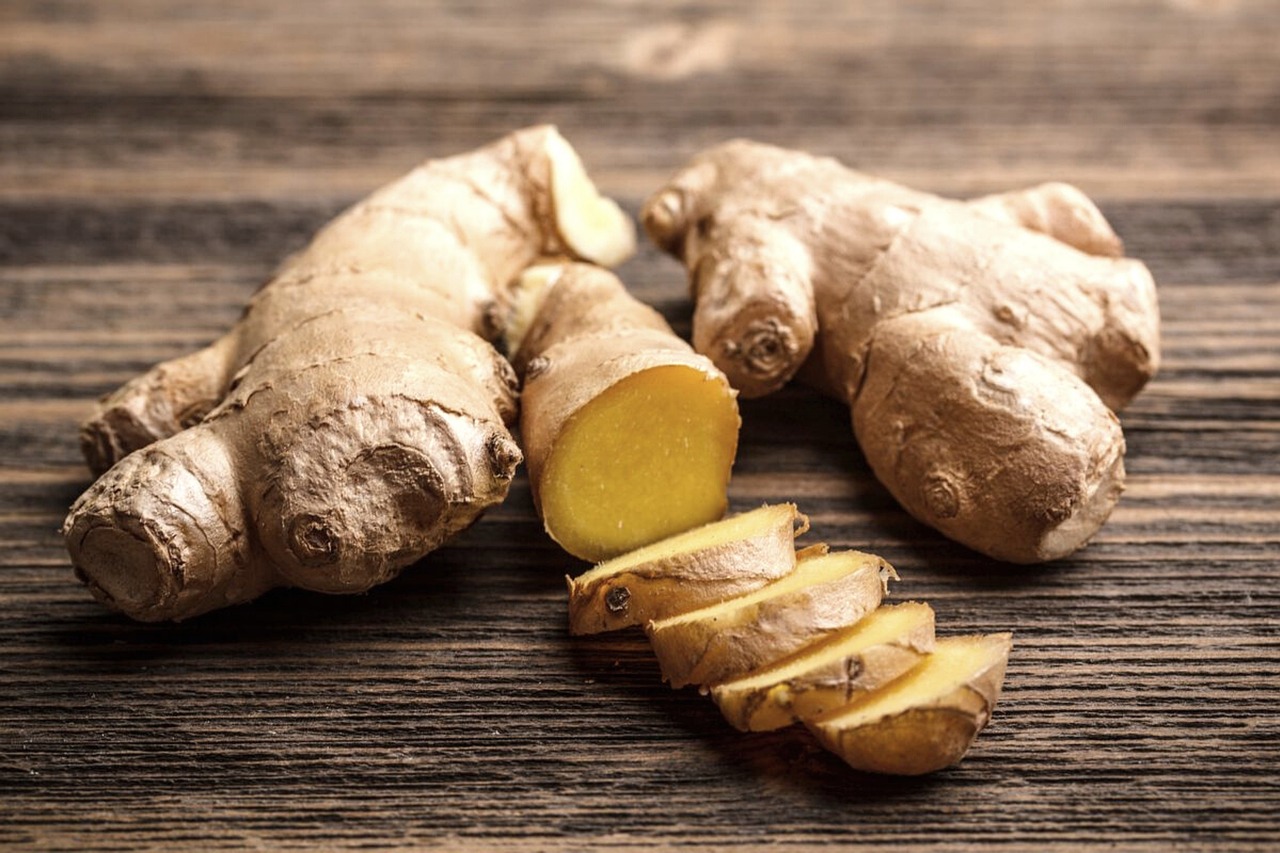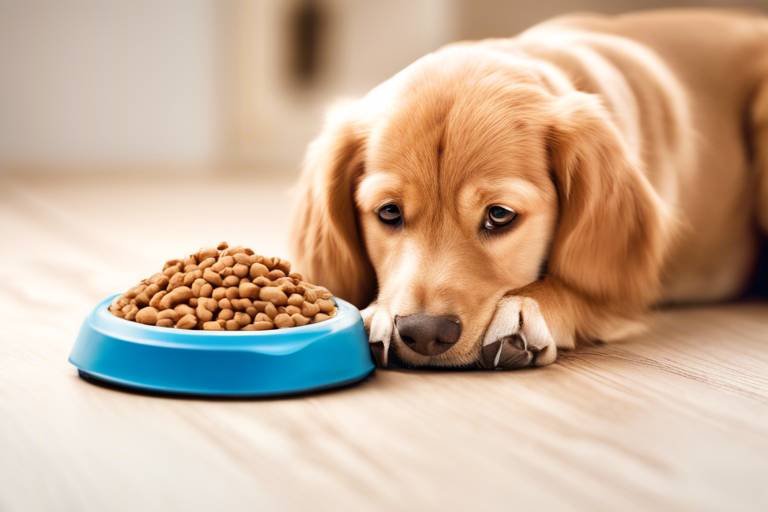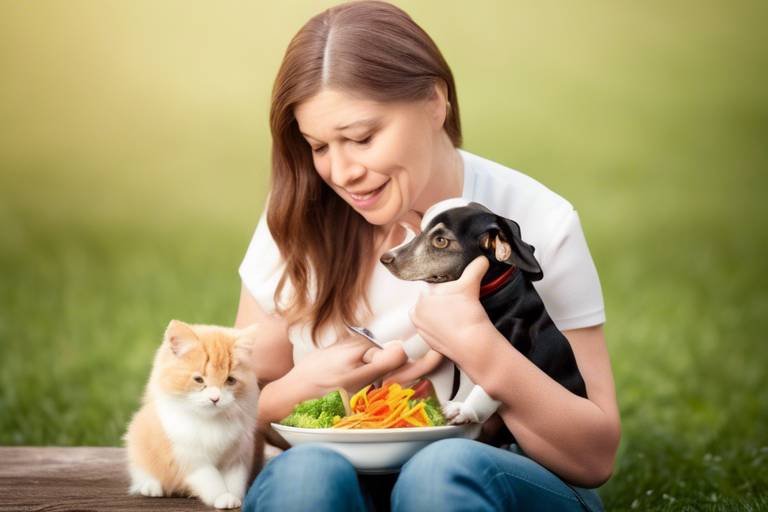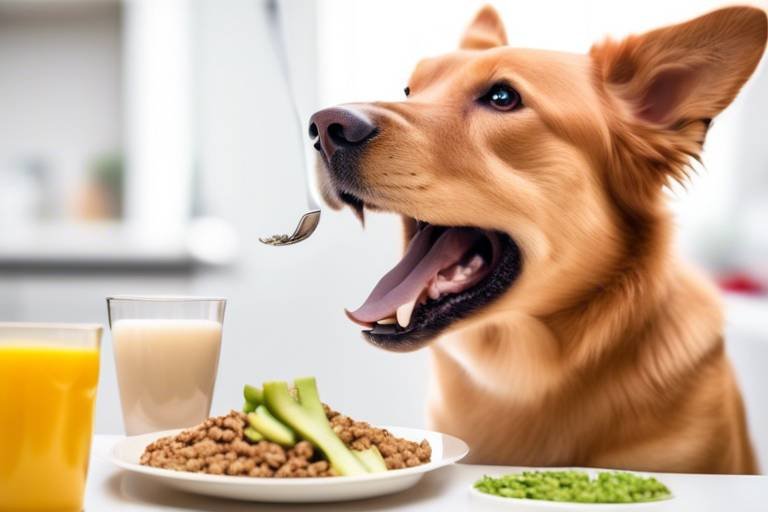How to Help Your Pet Transition to a New Diet
Transitioning your pet to a new diet can feel like a daunting task, but it doesn't have to be! Think of it as a journey that you and your furry friend embark on together. Just like humans, pets can be picky eaters, and a sudden change in their food can leave them feeling confused or even upset. The key to a successful transition lies in understanding your pet's needs and taking it one step at a time. In this article, we'll explore effective strategies that will not only make the transition smoother but also ensure that your pet enjoys their meals. So, grab a cup of coffee, sit back, and let's dive into the world of pet nutrition!
Before making any changes to your pet's diet, it's essential to understand their specific nutritional requirements. Just like you wouldn't wear shoes that are two sizes too small, your pet shouldn't eat food that doesn't suit their needs. Factors such as age, breed, and any existing health conditions play a significant role in determining what your pet should eat. For instance, puppies require different nutrients compared to senior dogs. Consulting with your veterinarian can provide valuable insights into what your pet needs for optimal health. Remember, a well-nourished pet is a happy pet!
Choosing the right food is like picking the perfect outfit for a special occasion—it should fit well and make your pet feel great! When selecting a new diet, take the time to read the labels carefully. Look for high-quality ingredients that cater to your pet's needs. Ingredients should be easily recognizable, like real meat, vegetables, and grains. Avoid foods that list fillers or artificial additives as the primary components. Your pet deserves the best, and a little research goes a long way in ensuring they receive the nutrition they need.
Before making any dietary changes, always consult your veterinarian. They are like your pet's personal nutritionist and can provide tailored recommendations based on your pet's unique health profile. Whether your pet has allergies, is overweight, or has a specific medical condition, your vet can help you navigate the world of pet food. Don't hesitate to ask questions; after all, you want what’s best for your furry companion!
Just like humans can have food allergies, pets can experience sensitivities too. If you suspect that your pet may have a food allergy, look for signs such as itching, digestive upset, or unusual behaviors after eating. Identifying these issues early can save your pet from discomfort and help you choose hypoallergenic options that suit their needs. Keep a journal of what your pet eats and any reactions they have; this can be a helpful tool for discussions with your vet.
Some pets have special dietary needs due to health conditions like diabetes, kidney disease, or obesity. These pets require tailored nutrition that can help manage their conditions. For example, a dog with diabetes may need a diet lower in carbohydrates. Be sure to discuss any specific health challenges your pet may face with your veterinarian to ensure you choose the right food that supports their health.
Now that you've chosen the right food, it’s time to introduce it to your pet's diet. A gradual transition is crucial to avoid digestive upset. Start by mixing a small amount of the new food with their current diet. Over the course of about a week, gradually increase the proportion of the new food while decreasing the old food. This method allows your pet's digestive system to adjust without causing discomfort. Think of it like easing into a new workout routine; you wouldn't jump into a marathon without training, right?
Once your pet has transitioned to the new diet, keep a close eye on their health and behavior. Monitoring is key to ensuring they are adapting well. Look for any signs of discomfort, such as changes in appetite, vomiting, diarrhea, or lethargy. If you notice anything unusual, don't hesitate to reach out to your veterinarian for guidance. Remember, your pet relies on you to be their advocate!
Recognizing signs that your pet is struggling with the new diet is essential. Common symptoms to watch for include:
- Loss of appetite
- Vomiting or diarrhea
- Excessive scratching or licking
- Changes in energy levels
If you notice any of these symptoms, it may be time to reassess the new food or consult your veterinarian for further advice.
If your pet shows signs of distress, don't panic! Adjustments may be necessary. Sometimes, it might mean switching back to the old food or trying a different brand or formula. Every pet is unique, and what works for one may not work for another. Be patient and flexible during this process; after all, it's about finding the right balance for your furry friend!
Q: How long should I take to transition my pet to a new diet?
A: A gradual transition over 7-10 days is ideal to minimize digestive upset.
Q: What if my pet refuses to eat the new food?
A: If your pet refuses to eat, try mixing in a little of their favorite treat or wet food to entice them.
Q: Can I switch my pet's diet abruptly?
A: It's not recommended as it can lead to digestive issues. Always opt for a gradual approach.
Q: How can I tell if the new diet is suitable for my pet?
A: Monitor your pet's health and behavior closely. If they seem happy and healthy, it's likely a good fit!

Understanding Your Pet's Nutritional Needs
This article explores effective strategies for helping your pet adjust to a new diet, including tips on gradual changes, monitoring their health, and ensuring they enjoy their meals.
Before diving into the world of pet diets, it’s essential to understand that not all pets are created equal. Just like humans, pets have unique nutritional requirements that depend on various factors such as age, breed, activity level, and any existing health conditions. Think of it this way: would you feed a toddler the same food as a teenager? The answer is a resounding no! Similarly, your furry friend deserves a diet tailored to their specific needs.
For instance, puppies and kittens require a diet rich in protein and calcium to support their rapid growth and development. On the other hand, senior pets may benefit from a diet lower in calories but enriched with joint-supporting nutrients like glucosamine. It's crucial to take a step back and assess your pet's life stage and health status before making any dietary changes.
When considering your pet’s diet, here are some key points to keep in mind:
- Age: Puppies and kittens need different nutrients than adult and senior pets.
- Breed: Certain breeds may have specific dietary needs or predispositions to certain health issues.
- Health Conditions: Pets with allergies, diabetes, or kidney issues may require specialized diets.
To get a clearer picture of what your pet needs, it can be helpful to consult with your veterinarian. They can provide insights tailored to your pet’s individual circumstances. Additionally, understanding pet food labels can be a game-changer. Look for high-quality ingredients that match your pet's nutritional needs. Ingredients like real meat, vegetables, and whole grains should be at the top of the list, while fillers like corn or soy should be avoided.
In summary, understanding your pet's nutritional needs is the first step in ensuring a successful transition to a new diet. By considering their age, breed, and health conditions, and consulting with your veterinarian, you can make informed choices that will keep your furry friend happy and healthy.
Selecting the appropriate food is vital for your pet's health. This section discusses how to read labels and choose high-quality ingredients that suit your pet's needs.
Always consult your veterinarian before making dietary changes. They can provide personalized recommendations and help identify any potential health issues related to diet changes.
Some pets may have food allergies or sensitivities. This subheading covers how to identify these issues and choose hypoallergenic options for your pet.
Pets with specific health conditions may require specialized diets. This section highlights the importance of tailored nutrition for pets with unique health challenges.
A gradual transition is essential to avoid digestive upset. This part outlines a step-by-step approach to introducing new food to your pet's diet.
After transitioning to a new diet, it's important to monitor your pet's health and behavior. This section explains what signs to look for during the adjustment period.
Recognizing signs of discomfort or adverse reactions is crucial. This subheading discusses common symptoms that may indicate your pet is struggling with the new diet.
If your pet shows signs of distress, adjustments may be necessary. This section provides guidance on how to modify the diet based on your pet's reactions.
Here are some common questions pet owners have when transitioning their pets to a new diet:
- How long should I take to transition my pet to a new diet? A gradual transition over 7-10 days is ideal to prevent digestive upset.
- What should I do if my pet refuses to eat the new food? Try mixing a small amount of their old food with the new food to make it more appealing.
- Can I switch my pet's diet suddenly? It's not recommended; always aim for a gradual transition.

Choosing the Right New Food
When it comes to your furry friend’s diet, can feel like navigating a maze. With so many options on the market, how do you pick the best one for your pet? First, it’s essential to understand that not all pet foods are created equal. Just like we wouldn’t eat junk food every day, our pets deserve nutrition that supports their health and well-being. Before diving into the world of pet food, take a moment to consider your pet's unique needs.
Start by reading the labels on various food products. Look for high-quality ingredients listed at the top of the ingredient list. The first few ingredients should ideally be whole proteins like chicken, beef, or fish, rather than fillers like corn or soy. A good rule of thumb is to think of the ingredient list as a recipe; you want to see recognizable items that you would feel comfortable feeding your pet. Here’s a quick breakdown of what to look for:
| Ingredient Type | What to Look For | Avoid |
|---|---|---|
| Protein | Whole meats (e.g., chicken, lamb) | Meat by-products, unnamed meats |
| Grains | Whole grains (e.g., brown rice, oats) | Fillers (e.g., corn, wheat) |
| Fats | Named animal fats (e.g., chicken fat) | Generic fat sources |
Next, consider your pet’s specific dietary needs. For example, puppies and kittens require different nutrients than adult or senior pets. If your pet has any health conditions, such as allergies or obesity, it’s crucial to choose a diet that addresses these issues. Some brands even offer specialized formulas tailored to specific breeds or health conditions, which can be a game-changer for your pet’s health.
Another important aspect is the brand's reputation. Do a little research to find out if the brand has a history of quality control and safety. Consumer reviews can be incredibly helpful, but also look for any recalls or safety issues associated with the brand. A trustworthy brand will often have a transparent approach to their ingredients and sourcing, making it easier for you to feel confident in your choice.
Lastly, consider your pet’s taste preferences. Just like us, pets can be picky eaters. You might find that your pet has a particular flavor they love or a texture they prefer. If you’re unsure, many brands offer sample sizes or trial packs, which can be a fantastic way to see what your pet enjoys without committing to a full bag. Remember, the goal is to find a food that not only meets their nutritional needs but also excites their taste buds!
In conclusion, choosing the right new food for your pet involves a mix of careful consideration, research, and a bit of trial and error. By focusing on quality ingredients, understanding your pet’s specific needs, and keeping an eye on brand reputation, you’re setting the stage for a successful dietary transition. And don’t forget to make the experience enjoyable for your pet—after all, mealtime should be a moment of joy!
- How long should I take to transition my pet to a new food? It's generally recommended to take 7-10 days, gradually mixing in the new food with the old.
- What if my pet refuses to eat the new food? If your pet refuses to eat, try warming the food or mixing in a little broth to enhance the flavor.
- How can I tell if the new food is right for my pet? Monitor your pet’s energy levels, coat condition, and digestion for signs of improvement or distress.
Consulting Your Veterinarian
When it comes to your pet’s diet, is not just a good idea; it's essential! Your vet is like a personal trainer for your furry friend’s health, equipped with the knowledge and expertise to guide you through the maze of pet nutrition. They can help you understand your pet's unique dietary needs based on various factors such as age, breed, weight, and any existing health conditions. Think of them as your pet's nutritionist, working to ensure that every meal is a step towards a healthier life.
Before you make any changes to your pet’s diet, it’s wise to schedule an appointment. During this visit, make sure to discuss:
- Your pet's current health status
- Any specific dietary concerns you may have
- Potential allergies or sensitivities
- Recommended brands or types of food
By sharing detailed information about your pet’s eating habits and any previous dietary changes, your veterinarian can provide tailored recommendations. For instance, if your pet has been diagnosed with a condition like diabetes or kidney disease, they might suggest a specialized diet that can help manage these issues effectively. This is crucial because not all pet foods are created equal, and some may contain ingredients that could exacerbate existing health problems.
Moreover, your vet can help you navigate the often overwhelming pet food labels. They can explain how to interpret the ingredient list and nutritional information, ensuring you select a product that truly meets your pet's needs. It’s like having a cheat sheet that gives you insights into what’s really in that bag of kibble!
In addition to dietary recommendations, your vet can also monitor your pet’s health during the transition period. Regular check-ups allow for adjustments based on how well your pet is responding to their new diet. If your furry friend is experiencing any adverse reactions, your veterinarian can quickly help you identify the problem and suggest alternative solutions. This proactive approach not only helps in preventing any potential health issues but also gives you peace of mind.
In conclusion, never underestimate the value of a good relationship with your veterinarian. They are your best ally in ensuring that your pet transitions smoothly to a new diet. With their guidance, you can confidently make decisions that will keep your pet healthy, happy, and thriving!
- How often should I consult my veterinarian about my pet's diet? It's best to consult your veterinarian whenever you plan to make significant changes to your pet's diet, or if you notice any health issues.
- What should I do if my pet refuses the new food? If your pet is reluctant to try the new food, consult your veterinarian for advice on how to make the transition smoother.
- Can I mix the old food with the new food? Yes, mixing the two can be an effective strategy for a gradual transition, but make sure to follow your vet's recommendations on proportions.
Assessing Food Allergies
When it comes to our furry companions, their health is our top priority. One of the most common issues pet owners face is food allergies. Just like humans, pets can develop sensitivities to certain ingredients, and recognizing these allergies is crucial for their well-being. So, how do you know if your pet is allergic to something in their food? Paying close attention to their behavior and physical symptoms can provide significant clues. For instance, if you notice excessive scratching, gastrointestinal upset, or unusual lethargy, it may be time to investigate further.
Identifying food allergies can sometimes feel like searching for a needle in a haystack. The first step is to keep a detailed diary of your pet’s diet and any symptoms they exhibit. This can help you pinpoint potential triggers. A common approach is to conduct an elimination diet, where you remove all potential allergens from your pet's meals and gradually reintroduce them one at a time. This method can help you determine which specific ingredient is causing the problem.
Here are some common signs of food allergies in pets:
- Itchy skin: Constant scratching or biting at their skin can indicate allergies.
- Digestive issues: Vomiting, diarrhea, or gas are common symptoms.
- Ear infections: Frequent ear infections can be linked to food allergies.
- Behavior changes: Increased irritability or lethargy may suggest discomfort.
Once you suspect a food allergy, it's essential to consult with your veterinarian. They can recommend appropriate tests to confirm allergies and suggest hypoallergenic diets that can help your pet thrive without discomfort. Remember, not all pets will have the same reactions, and some may even have multiple allergies, making it even more crucial to tailor their diet to their specific needs.
In conclusion, assessing food allergies in your pet is a vital part of ensuring they lead a happy and healthy life. By being vigilant and proactive, you can help your furry friend enjoy their meals without the discomfort of allergies.
Q: What are the most common food allergens for pets?
A: The most common food allergens include beef, chicken, dairy, wheat, and soy. However, any ingredient can potentially cause an allergy.
Q: How long does it take to identify a food allergy?
A: Identifying a food allergy can take several weeks to a few months, depending on the elimination diet process and your pet's specific reactions.
Q: Can pets outgrow food allergies?
A: Some pets may outgrow certain food allergies, but many will have lifelong sensitivities. Regular consultation with your vet can help manage these allergies effectively.
Q: Are there hypoallergenic pet foods available?
A: Yes, many brands offer hypoallergenic pet foods designed specifically for pets with allergies. These foods often contain novel proteins and carbohydrates that are less likely to cause reactions.
Considering Special Dietary Needs
When it comes to our furry companions, one size does not fit all—especially when it comes to their diets. Just like humans, pets can have special dietary needs based on various factors such as age, breed, health conditions, and even lifestyle. For instance, a senior dog may require a diet lower in calories and higher in fiber, while a growing puppy needs a diet rich in protein and essential nutrients to support their rapid development. Recognizing these unique requirements is crucial for maintaining your pet's overall well-being.
Pets with specific health conditions, such as diabetes, kidney disease, or allergies, necessitate tailored nutrition. These specialized diets can help manage symptoms, improve quality of life, and prevent further health complications. For example, a pet with kidney issues may benefit from a diet low in phosphorus and protein, while a diabetic pet might require a high-fiber diet to help regulate blood sugar levels. It's essential to consult your veterinarian to determine the best dietary plan for your pet's individual needs.
In addition to health conditions, some pets may have food sensitivities or allergies that require careful consideration. If you notice your pet scratching excessively, experiencing gastrointestinal upset, or showing signs of discomfort after eating, it may be time to investigate potential allergens in their diet. Common allergens include:
- Beef
- Dairy
- Wheat
- Chicken
- Fish
Switching to a hypoallergenic diet or a limited-ingredient diet can often alleviate these issues. These diets typically contain novel protein sources and fewer ingredients, making it easier to pinpoint and eliminate allergens. Always involve your veterinarian in this process to ensure your pet receives balanced nutrition while avoiding harmful ingredients.
Moreover, pets with certain lifestyle demands, such as working dogs or highly active breeds, may require diets that support their energy levels and recovery. High-performance pet foods are designed with these factors in mind, packed with the necessary nutrients to fuel their active lifestyles. Remember, the right diet can make a world of difference in your pet's health and happiness.
In summary, considering your pet's special dietary needs is not just about choosing the right food; it's about understanding their unique circumstances and making informed decisions. By working closely with your veterinarian and paying attention to your pet's reactions, you can ensure they thrive on a diet that caters specifically to their needs.
Q: How can I tell if my pet has special dietary needs?
A: Look for signs such as weight changes, gastrointestinal issues, allergies, or changes in energy levels. Consulting your veterinarian is the best way to assess your pet's specific needs.
Q: Are all pet foods created equal?
A: No, pet foods vary widely in quality. Always read labels carefully and choose high-quality ingredients that meet your pet's specific requirements.
Q: How long does it take for a pet to adjust to a new diet?
A: It can take anywhere from a few days to a couple of weeks for a pet to fully adjust to a new diet. Monitor your pet closely during this transition period.
Q: Can I make homemade food for my pet?
A: Yes, but it’s essential to ensure that the homemade diet is balanced and meets all of your pet's nutritional needs. Consulting with a veterinarian or a pet nutritionist is recommended.
Gradually Introducing the New Diet
Transitioning your furry friend to a new diet doesn't have to be a daunting task. In fact, it can be a smooth journey if you approach it with care and patience. Think of it as introducing a new friend to your circle; you wouldn’t throw them into the deep end right away, would you? Instead, you’d gradually ease them into the group. The same principle applies to your pet's new food. A sudden change can lead to digestive upset, which can be uncomfortable for your pet and stressful for you. So, let’s break it down into manageable steps!
The first step in this transition is to create a blend of the old and new foods. Start by mixing a small amount of the new food with their current diet. A good rule of thumb is to begin with a ratio of about 25% new food to 75% old food. This allows their digestive system to adjust without being overwhelmed. Over the course of about a week, you can gradually increase the proportion of new food while decreasing the old food.
Here’s a simple schedule you can follow:
| Day | New Food Ratio | Old Food Ratio |
|---|---|---|
| 1-2 | 25% | 75% |
| 3-4 | 50% | 50% |
| 5-6 | 75% | 25% |
| 7+ | 100% | 0% |
As you follow this schedule, keep a close eye on your pet’s reactions. Are they eating well? Are they experiencing any digestive issues? Monitoring their behavior and health is crucial during this transition. If your pet seems hesitant to eat or shows signs of discomfort, it might be wise to slow down the transition process. Perhaps give them a few extra days at each stage to ensure they’re comfortable before moving on to the next ratio.
Another helpful tip is to make mealtime enjoyable. You can do this by adding a splash of warm water to their food or mixing in some of their favorite treats to entice them. Remember, the goal is not just to change their diet but to ensure they enjoy their meals, making them look forward to mealtime rather than dreading it.
In summary, the key to successfully introducing a new diet to your pet lies in patience and observation. By gradually adjusting their food ratios and monitoring their responses, you can help your pet embrace their new diet without any hiccups. It’s all about making this transition a positive experience for both you and your beloved companion!
- How long should I take to transition my pet to a new diet? It's recommended to take about 7-10 days, depending on your pet's sensitivity.
- What signs should I look for if my pet is having trouble with the new food? Look for symptoms like vomiting, diarrhea, or refusal to eat.
- Can I mix different brands of food? It's best to stick to one brand at a time unless advised otherwise by your vet.

Monitoring Your Pet's Response
Once you've made the leap to introduce a new diet to your beloved pet, the journey doesn’t end there. In fact, it's just the beginning! Monitoring your pet's response is crucial to ensure that they are adapting well to their new meals. Think of it like being a detective; you need to observe and gather clues about how your pet is feeling and reacting to their new food. Are they excited during mealtime, or do they seem hesitant? These behaviors can tell you a lot!
During this transition, keep a close eye on your pet's overall health and behavior. Changes in appetite, energy levels, or bathroom habits can all be indicators of how well your pet is adjusting. For instance, if your furry friend suddenly becomes lethargic or refuses to eat, it’s time to take action. You wouldn't ignore a friend who seemed off, right? The same goes for your pet!
Here’s a quick rundown of some signs to monitor as your pet adjusts to their new diet:
- Appetite Changes: Is your pet eating less or more than usual?
- Energy Levels: Are they more active, or do they seem to be sleeping more?
- Bathroom Habits: Any changes in the frequency or consistency of their stools?
- Skin and Coat Condition: Is their fur shiny and healthy, or does it look dull and lifeless?
It's also important to note that some pets may take longer to adjust than others. Just like us, every pet is unique, and their response to dietary changes can vary widely. If you notice any concerning signs, don’t hesitate to reach out to your veterinarian for advice. They can help determine whether the symptoms are related to the new diet or if there might be another underlying issue at play.
In addition to monitoring their physical health, pay attention to their emotional well-being. Pets can be sensitive to changes in their environment and routines. If they seem anxious or stressed, consider creating a calm and inviting mealtime atmosphere. Perhaps a cozy spot with their favorite blanket or a quiet corner in the kitchen could help ease their transition. Remember, a happy pet is a healthy pet!
As you navigate through this adjustment period, keep a journal of your pet's behaviors and reactions. This can help you identify patterns and make informed decisions about their dietary needs. After all, you know your pet best! By being proactive and attentive, you can ensure that this dietary transition is smooth and beneficial for your furry friend.
To wrap things up, let’s address some common questions pet owners have when it comes to monitoring their pet's response to a new diet:
- How long should I monitor my pet after changing their diet? It's advisable to keep a close watch for at least two weeks after the transition to assess how well they are adjusting.
- What should I do if my pet refuses to eat the new food? Try mixing a small amount of the new food with their old food, gradually increasing the new food over time. If they still refuse, consult your vet.
- Are there specific signs that indicate my pet is allergic to the new food? Look for signs such as itching, vomiting, diarrhea, or excessive gas, and consult your veterinarian if you notice any of these symptoms.
Identifying Signs of Discomfort
When you introduce a new diet to your furry friend, it's essential to be vigilant about their behavior and physical condition. Pets, much like humans, can experience discomfort during dietary transitions, and being able to identify these signs early can make all the difference. Just imagine trying a new food that your stomach doesn’t agree with; your pet feels the same way! So, how can you tell if your pet is struggling with the new food?
First and foremost, watch for changes in their eating habits. If your pet suddenly loses interest in their meals or begins to eat less than usual, it could be a red flag. Additionally, keep an eye on their physical reactions. Symptoms such as vomiting, diarrhea, or excessive gas are not only uncomfortable but can also indicate that the new food isn't sitting well with them. If you notice any of these issues, it’s time to take action.
Behavioral changes can also be a significant indicator of discomfort. Is your usually playful pup suddenly lethargic or irritable? Or perhaps your cat is hiding more than usual? These subtle shifts in behavior can be your pet's way of communicating that something is off. It's crucial to connect the dots between their diet change and these behavioral cues. Remember, pets can’t speak up about their discomfort, so you need to be their voice!
To help you better understand the signs of discomfort, here’s a quick rundown of common symptoms to look out for:
- Loss of appetite: Not finishing meals or refusing food altogether.
- Gastrointestinal issues: Vomiting, diarrhea, or excessive flatulence.
- Behavioral changes: Increased lethargy or unusual aggression.
- Weight loss: Noticeable decrease in weight over a short period.
- Skin irritations: Itching or redness may indicate food allergies.
If you observe any of these signs, it’s crucial to take them seriously. Most importantly, don’t hesitate to reach out to your veterinarian. They can help assess whether the new food is suitable for your pet and suggest alternatives if necessary. Remember, your pet relies on you to ensure their well-being, so being attentive to these signs can lead to a smoother transition and a happier, healthier pet!
Q: How long should I monitor my pet after changing their diet?
A: It's best to monitor your pet for at least two weeks after the transition. This allows enough time to identify any adverse reactions.
Q: What should I do if my pet shows signs of discomfort?
A: If your pet exhibits any signs of discomfort, consult your veterinarian immediately. They can provide guidance on whether to continue with the new diet or consider alternatives.
Q: Can I mix the old and new food to help with the transition?
A: Yes, gradually mixing the old and new food can help ease the transition. Start with a small amount of the new food and increase it over time.
Q: Are there specific signs that indicate a food allergy?
A: Yes, signs of food allergies may include itching, skin irritations, gastrointestinal upset, or chronic ear infections. If you suspect an allergy, consult your veterinarian for testing.
Adjusting the Diet as Needed
When it comes to your pet’s diet, flexibility is key. Just like humans, pets can have varying reactions to new foods, and it’s essential to be attentive to their needs during this transition. If you notice any signs of distress or discomfort, it may be time to reconsider the current diet. This doesn’t mean you’ve made a mistake; rather, it’s a part of the journey in finding what works best for your furry friend. After all, every pet is unique, and what suits one may not suit another.
First and foremost, keep an eye on your pet’s behavior and health. Are they eating less than usual? Do they seem lethargic or irritable? These could be indicators that the new diet isn’t sitting well with them. If you observe any of these symptoms, it’s crucial to take action. Start by evaluating the ingredients of the new food. Sometimes, a specific component might not agree with your pet’s digestive system. For instance, if you’ve switched to a grain-free diet, your pet could be sensitive to the new protein source. In such cases, consider reverting to their previous food or trying a different brand that offers a similar nutritional profile.
Another effective strategy is to mix and match different foods. You might find that blending the old food with the new one helps your pet adjust more smoothly. For example, if your pet is currently on a chicken-based diet but you’ve introduced a fish-based food, try combining the two in gradual proportions. Start with a higher ratio of the old food and slowly increase the new food over time. This method can ease the transition and minimize gastrointestinal upset.
Here’s a simple guideline to help you adjust the food ratio:
| Days | Old Food (%) | New Food (%) |
|---|---|---|
| 1-3 | 75 | 25 |
| 4-6 | 50 | 50 |
| 7-10 | 25 | 75 |
| 11+ | 0 | 100 |
Additionally, if you notice any persistent issues, such as vomiting, diarrhea, or changes in appetite, it’s advisable to consult your veterinarian. They can provide insights into whether the new diet is suitable or if there might be an underlying health concern. Remember, your pet’s health is paramount, and sometimes a quick consultation can save a lot of trouble down the road.
Lastly, don't underestimate the power of patience. Adjusting to a new diet might take time, and your pet may need a little extra love and reassurance during this period. Providing a calm and stress-free environment can help ease their anxiety and encourage them to embrace their new meals. Just like introducing a new dish to a picky eater, it may take a few attempts before they fully accept the change. So, keep the faith, and soon enough, your pet will be savoring their new diet with gusto!
- How long does it take for a pet to adjust to a new diet? Most pets can take anywhere from a few days to a couple of weeks to fully adjust, depending on their individual sensitivities.
- What should I do if my pet refuses to eat the new food? Try mixing it with their favorite treats or gradually increasing the amount of the new food while decreasing the old food.
- Can I change my pet's diet if they have allergies? Yes, but it’s essential to consult with your veterinarian to find suitable hypoallergenic options.
- What are the signs that my pet is having a negative reaction to the new food? Look for symptoms like vomiting, diarrhea, lethargy, or changes in appetite.
Frequently Asked Questions
- How can I tell if my pet needs a diet change?
If your pet is experiencing weight gain, lethargy, or digestive issues, it may be time to reconsider their diet. Additionally, changes in their coat quality or energy levels can also indicate a need for a nutritional overhaul.
- What is the best way to introduce a new food to my pet?
The key is to make the transition gradual. Start by mixing a small amount of the new food with their current diet, slowly increasing the new food's proportion over a week or two. This method helps prevent digestive upset and allows your pet to adjust more comfortably.
- Should I consult my veterinarian before changing my pet's diet?
Absolutely! Your veterinarian can provide personalized advice based on your pet's specific health needs, age, and breed. They can also help identify potential food allergies or sensitivities that might affect dietary choices.
- What signs should I look for to know if my pet is reacting poorly to the new diet?
Keep an eye out for symptoms such as vomiting, diarrhea, excessive scratching, or changes in appetite. If you notice any of these signs, it may indicate that the new food isn't agreeing with your pet.
- Can I mix different brands of pet food?
While it's possible to mix different brands, it's crucial to ensure that the combined foods meet your pet's nutritional needs. Always check the ingredient quality and nutritional content before mixing, and consult your vet if you're unsure.
- How long does it take for a pet to adjust to a new diet?
Typically, it can take anywhere from a few days to a couple of weeks for your pet to fully adjust. The gradual introduction of the new food helps make this transition smoother, but patience is key!
- What if my pet refuses to eat the new food?
If your pet is turning their nose up at the new food, try mixing in a little of their favorite treats or wet food to make it more appealing. If they still refuse, it might be worth consulting your vet to explore other options.
- Are there specific dietary needs for older pets?
Yes! Older pets often require diets that are lower in calories but higher in fiber to assist with digestion. They may also need additional supplements for joint health or other age-related issues. Always check with your vet for the best dietary plan.



















